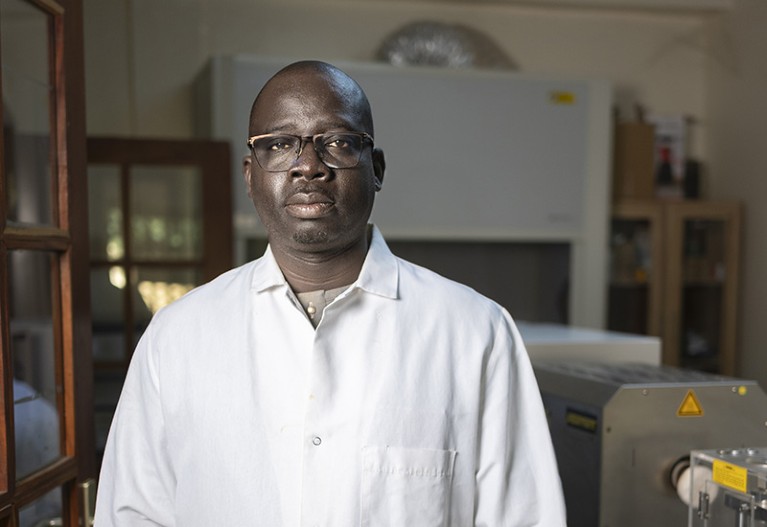
Balla Diop Ngom, who runs a material-sciences laboratory in Senegal, has forged agreements with institutions in the global north to help train African students in the subject.Credit: Sylvain Cherkaoui/Panos Pictures for Nature
International collaboration is an essential force in science. But the nature and balance of partnerships often determines how beneficial they are to individuals, institutions and societies. Nowhere is this more true than in collaborations involving the global north and south.
Nature Index 2023 North–south collaboration
Data from 82 natural-science journals tracked by Nature Index suggest that in this selective set of publications, global north–south research parity is still a distant goal. Between 2015 and 2022, 13,580 articles in the index involved at least one author based at an institution in the global north and at least one author from the south, but this was only 2.7% of all publications in the database. The ratio of north–south authorship in these articles was also heavily weighted to the global north by almost 3 to 1. Among the global-south countries that are represented, the most developed nations, such as India, dominate. But perhaps the most worrying statistic comes from separate data on south–south partnerships. From 2015 to 2022, there were just 24 articles in the index that involved only collaborations between global-south countries. The equivalent figure for north–north collaborations was almost 200,000.
There are caveats. The ‘global north’ and ‘global south’ are categories without definitive boundaries, so World Bank income groups were used to split countries. This inevitably leads to some arguable categorizations: South Africa is an upper middle-income country so is a ‘global north’ country in the data, for instance. The same is true for much of Latin America. Data from health-sciences journals, recently added to the Nature Index, were not available for analysis (the supplement features separate data from the Digital Science Dimensions database to broaden subject scope).
Even so, the data are a stark warning that global north–south research equity still has a gulf to cross. Addressing the uneven playing field in publishing or investing real resources to back up intergovernmental agendas may be places to start. But ultimately, change might have to be driven by the endeavour and determination of researchers.

 Four global-south researchers making cross-border collaborations count
Four global-south researchers making cross-border collaborations count
 North–south country collaborations reveal untapped potential
North–south country collaborations reveal untapped potential
 Is the EU–Africa innovation plan toothless?
Is the EU–Africa innovation plan toothless?
 How to level the global publishing playing field
How to level the global publishing playing field





